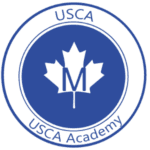| Course Type : | University Preparation |
| Credit Value : | 1.0 |
| Prerequisite : | Grade 10, Core French, (FSF2D) |
Course Description
Core French Grade 11: This course offers students extended opportunities to speak and interact in real-life situations in French with greater independence. Students will develop their listening, speaking, reading, and writing skills, as well as their creative and critical thinking skills, through responding to and exploring a variety of oral and written texts. They will also broaden their understanding and appreciation of diverse French-speaking communities, and will develop skills necessary for lifelong language learning.
Outline of Course Content
Unit
Titles and Descriptions
Time and Sequence
Unit 1
Je Me Presente
In this unit, the students will focus on expressing themselves in the French language. That will include through speaking, listening, reading and writing. They will speak and write about aspects of themselves. This could range from school, hobbies, sports, family, friends, pets, movies, tv shows, reading and music. For grammar, the imperfect auxiliary will be taught.
30 hours
Unit 2
Les Contes
For this unit, students will read and analyze a number of French stories. They will read them aloud as a group and discuss them in class. And, they will analyze and interpret the stories in different ways, both as a group and individually. The voix passive will be taught in this unit.
30 hours
Unit 3
L’art, la poesie et la musique
This unit will be based on French art, poetry and music. A variety of selections will be studied and discussed in the unit. The students will also choose a selection from each medium and write about them. The past participle will be taught.
24 hours
Unit 4
La nourriture francaise
French cuisine will be the main topic of this unit. It will be not only be based on food from France the many other French-speaking countries that are located around the world. The conditionnel antérieur will be learned in this unit.
23 hours
Unit 5
Final Exam
03 hours
Total
110 hours
Core French Grade 11: When students are engaged in active and experiential learning, they tend to retain knowledge for longer periods and to develop, acquire, and integrate key skills more completely. Some of the teaching and learning strategies that are suitable to material taught in nutrition and health studies include:
Conversing in French | Guided internet research | Direct Instructions |
Presentations | Discussion Groups | Movies and videos |
Interactive activities | Research projects | Model making |
Visuals | Multimedia presentations | Reflections |
Problem solving | Discussion groups | Interviews |
Core French Grade 11: Assessment is a systematic process of collecting information or evidence about a student’s progress towards meeting the learning expectations. Assessment is embedded in the instructional activities throughout a unit. The expectations for the assessment tasks are clearly articulated and the learning activity is planned to make that demonstration possible. This process of beginning with the end in mind helps to keep focus on the expectations of the course. The purpose of assessment is to gather the data or evidence and to provide meaningful feedback to the student about how to improve or sustain the performance in the course. Scaled criteria designed as rubrics are often used to help the student to recognize their level of achievement and to provide guidance on how to achieve the next level. Although assessment information can be gathered from a number of sources (the student himself, the student’s course mates, the teacher), evaluation is the responsibility of only the teacher. For evaluation is the process of making a judgment about the assessment information and determining the percentage grade or level.
The assessment will be based on the following processes that take place in the classroom:
| Assessment FOR Learning | Assessment AS Learning | Assessment OF Learning |
|---|---|---|
During this process the teacher seeks information from the students in order to decide where the learners are and where they need to go. | During this process the teacher fosters the capacity of the students and establishes individual goals for success with each one of them. | During this process the teacher reports student’s results in accordance to established criteria to inform how well students are learning. |
| Conversation | Conversation | Conversation |
Classroom discussion Self-evaluation Peer assessment | Classroom discussion Small group discussion Post-lab conferences | Presentations of research Debates |
| Observation | Observation | Observation |
| Drama workshops (taking direction) Steps in problem solving | Group discussions | Presentations Group Presentations |
| Student Products | Student Products | Student Products |
| Reflection journals (to be kept throughout the duration of the course) Check Lists Success Criteria | Practice sheets Socrative quizzes | Projects Poster presentations Tests In Class Presentations |
Assessment is embedded within the instructional process throughout each unit rather than being an isolated event at the end. Often, the learning and assessment tasks are the same, with formative assessment provided throughout the unit. In every case, the desired demonstration of learning is articulated clearly and the learning activity is planned to make that demonstration possible. This process of beginning with the end in mind helps to keep focus on the expectations of the course as stated in the course guideline. The evaluations are expressed as a percentage based upon the levels of achievement.
A variety of strategies are used to allow students opportunities to attain the necessary skills for success in this course and at the post-secondary level of study. To facilitate learning, the teacher uses a variety of activities engaging the whole class, small groups, and individual students.
Some of the approaches to teaching/learning include
Strategy | Purpose | Who | Assessment Tool |
Class discussion | Formative | Teacher/student | Observation Checklist |
Class Debates | Formative | Teacher | Rubric or marking scheme |
Daily class work | Formative | Teacher/student | Observation Checklist |
Assignments | Summative | Teacher | Rubric or marking scheme |
Written test | Summative | Student | Marking scheme |
Project | Formative | Teacher/student | Marking scheme |
Final written exam | Summative | Teacher/student | Marking scheme |
The evaluation of this course is based on the four Ministry of Education achievement categories of knowledge and understanding (25%), thinking (25%), communication (25%), and application (25%). The evaluation for this course is based on the student’s achievement of curriculum expectations and the demonstrated skills required for effective learning.
The percentage grade represents the quality of the student’s overall achievement of the expectations for the course and reflects the corresponding level of achievement as described in the achievement chart for the discipline.
A credit is granted and recorded for this course if the student’s grade is 50% or higher. The final grade for this course will be determined as follows:
- 70% of the grade will be based upon evaluations conducted throughout the course. This portion of the grade will reflect the student’s most consistent level of achievement throughout the course, although special consideration will be given to more recent evidence of
- 30% of the grade will be based on a final evaluation of two products administered at the end of the course. The first product is a Project, subdivided into three distinct subsections and is worth 15% of the overall course marks. This Project will be evaluated using a marking scheme and a rubric. The second product will be a final exam of well-formulated essay questions requiring information from the whole course as well as the student’s reports completed through-out the course
Teachers will bring additional resources and teaching materials that provide a rich and diverse learning environment.


